By Heather Brigstock MSN RN CNL
On Sunday, October 7th 2017, my family and I went to bed just like we do every night. School lunches were packed and sitting on the counter ready for the next day. A load of laundry sat in the dryer ready to be folded. Our community of almost 200,000 people was going about its usual routine. We had no idea our world was about to be turned upside down.
I felt my wife get out of bed and assumed it was morning. The faint glow of what I thought was daylight came streaming through our open window. “What time is it?” I asked. “2 a.m. and I smell smoke” she replied. I sighed and rolled over, desperate to get back to sleep. I didn’t smell anything, but she insisted on going outside to check. She quickly returned to tell me she heard explosions outside. This news lured me out of my bed and I went outside to see what she was concerned about. The sky in front of our house was a red glow and we heard explosions in the distance. The blare of sirens reassured us that the fire department was already alerted to whatever this fire was. But something didn’t feel right. Neighbors started pouring out of their houses, some packing up their cars and leaving. Our cell phones were oddly silent despite our expectation that if we were in danger, we would have gotten some kind of alert. The bells at the Catholic Church down the street started ringing at 2:30 a.m. We decided to turn on the radio and see if there was any information about where this fire was. The explosions were getting much closer and the red glow in the sky was growing. Within a minute of listening to the radio, we learned that our town was burning down around us. Flames were surrounding our town on three sides and moving at a speed of over 200 feet per second. Cell towers were overwhelmed so none of the calls we made to alert our friends would go through. The hour that followed was a chaotic blur that is etched in our minds forever. We pulled the kids out of bed and told them to grab anything that could not be replaced. The four of us frantically ran around the house grabbing family heirlooms, photos and packing overnight bags. We crated our three cats and put our fire safe containing important documents in the car. Adrenaline was coursing through us, propelling us to grab everything that could possibly fit in our cars. We had no idea where we were fleeing, so we packed some of the emergency food and water that I always keep on hand. My fourteen-year-old was sobbing, looking for her favorite childhood blanket. My mind kept jumping from being ultra-focused to going blank. I couldn’t remember where basic things were and I kept coming back to the same thought: how did this happen?
The hours, days and two weeks that followed were a painful mix of emotional trauma, sleep deprivation and extreme stress. The National Guard and first responders from all over the country and even Canada, rolled into town. Pictures of the devastation dominated my social media newsfeed. My friend’s homes burned to the ground, with many getting out with only the pajamas on their backs. Hundreds of people were unaccounted for. For two full weeks the fires raged; the wind would shift and flames would change direction, threatening different neighborhoods. Night brought a sinking feeling since the darkness hampered the firefighting efforts, and seemed to carry with it a fear of the unknown. Two out of our three hospitals were evacuated and closed, with flames licking their walls and patients in gowns loaded onto buses. Thousands of people were living in shelters, sleeping in their cars and tent camping in parking lots. The collective grief in our community hung in the air, almost as thick as the toxic smoke that burned our throats. Entire portions of our city were destroyed.
My family and I evacuated to my parent’s house, 30 miles north of Santa Rosa. A couple of days after the fire started, I began getting messages and texts from nurses. People with ostomies were living in the shelters and they had no time to pack their supplies when they evacuated. Since hospitals were contaminated and closed, getting supplies from them was not an option. I alerted UOAA of the issue as I quickly started organizing an effort to gather donated supplies from manufacturers. Living through that experience taught me many things about disaster preparation as someone living with an ostomy.
Before the Disaster
*Prepare now-don’t wait! We have a false sense of security when we think that disasters won’t happen in our town. I never thought a wildfire would rage through my city. Preparing properly could not only save your valuables and ostomy supplies, it could save your life.
*Make a go-bag-A go-bag is a bag that is packed at all times, in an easily accessed place that you can grab as you run out the door in the event of an evacuation. It should contain extra ostomy supplies and necessary medications in addition to important documents. According to FEMA, you should pack your go bag with enough supplies for 3 days. This includes food, water, flashlights etc. Visit ready.gov to see a complete list of recommended items for your go bag. During the fires, we were evacuated for two weeks but many of my friends were evacuated for four weeks, so plan your ostomy supplies accordingly.
*Make lists and assign tasks-Have a family meeting and decide who is responsible for what in an emergency. Instead of everyone running around frantically, each person would have a list of tasks. One person should be in charge of medical supplies and medications. Make a list of family heirlooms/irreplaceable items and where they are located. Don’t forget laptops or thumb drives if that is where photos are stored.
*Make a communication plan- During emergencies, cell towers can be overwhelmed and calls will often drop. In our situation, texts would send but since it was the middle of the night, people outside our area were sleeping and never got our frantic messages. Afterward, we discovered that most cell phones have a way to allow texts/calls to alert from certain numbers even if the phone is on silent. For example, if my phone is on silent for the night but my mom calls me, my phone will ring because it is now set so that her number overrides the silent setting. Learn about the features your phone has for emergencies. Also designate a meeting place outside the area so that if there is a rushed evacuation and your family is separated, you know where to meet each other.
*Keep emergency supplies together-We discovered that all of the emergency supplies I had carefully gathered were not located in the most efficient places. I had food and water in the garage but our emergency radio and first aid kit were out in the shed. I had purchased N-95 face masks but I couldn’t remember where they were. Having the items isn’t enough, they need to be located in a place where they are fast and easy to access. The same rule applies for ostomy supplies-keep them together in a place that is accessible.
*Plan on extra water if you have an ostomy-For emergency preparedness, the Red Cross recommends planning for ½ gallon of water per person per day. However, that is for the average person. If you require more water due to your ostomy or an underlying medical condition, plan on more. You may want to purchase fluids that are enriched with electrolytes to prevent dehydration.
*Keep gas in your car and cash in your wallet- During most disasters, one of the first things that happens is everyone rushes to get gas on their way out of town. Gas stations quickly ran out of gas during the fire. Credit card machines also went down in many locations so cash was the only way to pay for gas. In this era of electronics and technology, always have a backup plan.
*Take pictures- Go through your home and take pictures of each room. This will serve as proof for your insurance company of what you own, and it will also remind you of what you own so you can claim your losses. Take a photo of your medical supplies as well. Store these pictures in more than one place; I recommend keeping them digitally on your phone and hard copies in your go bag.
*Know your insurance policy- Dust off that policy and read it. Know what coverage you have, and make sure you have enough coverage. If you are a renter, strongly consider purchasing renters insurance. If you rent and do not have renters insurance, you can lose everything.
During the Disaster
*You are not replaceable! First and foremost, do not take unnecessary risks to save material items. Your safety is more important than anything else.
*Communicate your needs- If you find yourself in a situation where you don’t have the medical supplies or medications you need, don’t wait until you run out to tell someone you need help. Shelters usually have volunteer nurses/medical staff on site. Talk to them and any other organizations who are on site to let them know you need help. It takes time to get supplies and medication arranged so giving medical staff a heads up before you run out is best. Use UOAA’s list of Emergency Supply Resources or contact a local support group in the area you have been evacuated to if you need help locating supplies.
*Know your rights- If you live in a federally declared disaster area, you are entitled to replacement prescriptions and medical supplies. Call your insurance company to find out what you need to do to replace what you lost. If you are covered by Medicare, information regarding replacing lost medical supplies in a disaster can be found on their website www.medicare.gov or call 1-800-MEDICARE.
*Register with Red Cross and FEMA- If you are impacted by a disaster, the first step in accessing assistance is to register with these organizations so they know you are among the affected.
The Aftermath
*Recognize the impact of trauma- Once the disaster is over, the news trucks leave town and the rest of the world goes back to their normal routine. In the impacted community, the devastation of what occurred remains and nothing is the same. Almost 5,000 homes were lost in my community. I have friends that are still displaced over 2 months later. Entire sections of town are gone and we drive by them every day. We drive by places where we know some of the 45 people died. Trees are frozen in time, charred but forever arched in the wind gusts from that night. The smell of smoke still lingers in certain areas. Toxic ash still kicks up into the air. Rows of chimneys are the only thing that remains in many neighborhoods. Several schools burned down along with many businesses, taking those jobs with them. Housing is extremely difficult if not impossible to find. People are still living in their cars and camping in parking lots. The people who lost homes are of course grappling with overwhelming trauma, but the trauma also impacts anyone who lived through that night. Driving through flames and watching your friends’ homes burn down are not things that are easy to forget. Once I knew our home was going to survive, the survivor’s guilt crept in. Recognize what you’ve been through and seek out professional support if you need it.
On behalf of Sonoma County CA, thank you to every first responder who came to help us fight this devastating fire. Thank you for fighting flames at the walls of our hospitals and thank you for saving the thousands of homes you were able to save.
For more information on how to prepare for a disaster, visit www.redcross.org , www.fema.gov and www.ready.gov

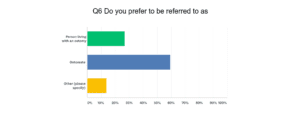
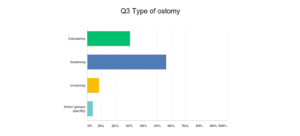
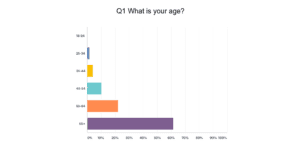

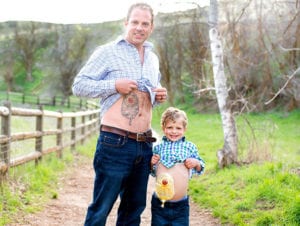
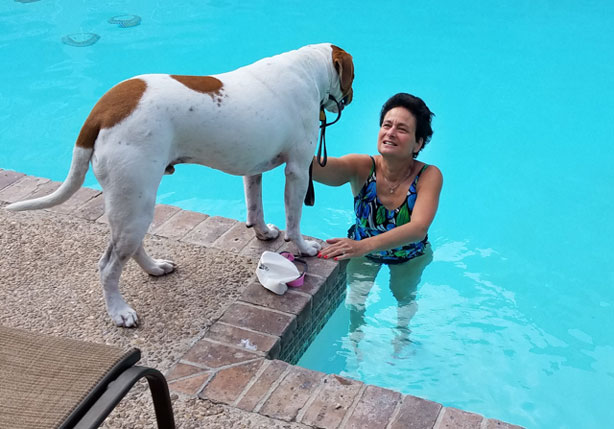 After healing from ostomy surgery, people of all ages and types enjoy swimming, surfing scuba diving or just relaxing in a hot tub. We understand the anxiety from worrying about leaks can keep some people out of the pool. There are no ostomy specific restrictions to swimming in public places. “Swimming has made me stronger both physically and emotionally. It is a great outlet and has made me even healthier. I feel and look more beautiful” says Lynn Wolfson of Florida. Lynn has two ostomies and swims in triathlons. Here are some solutions to common concerns.
After healing from ostomy surgery, people of all ages and types enjoy swimming, surfing scuba diving or just relaxing in a hot tub. We understand the anxiety from worrying about leaks can keep some people out of the pool. There are no ostomy specific restrictions to swimming in public places. “Swimming has made me stronger both physically and emotionally. It is a great outlet and has made me even healthier. I feel and look more beautiful” says Lynn Wolfson of Florida. Lynn has two ostomies and swims in triathlons. Here are some solutions to common concerns.
